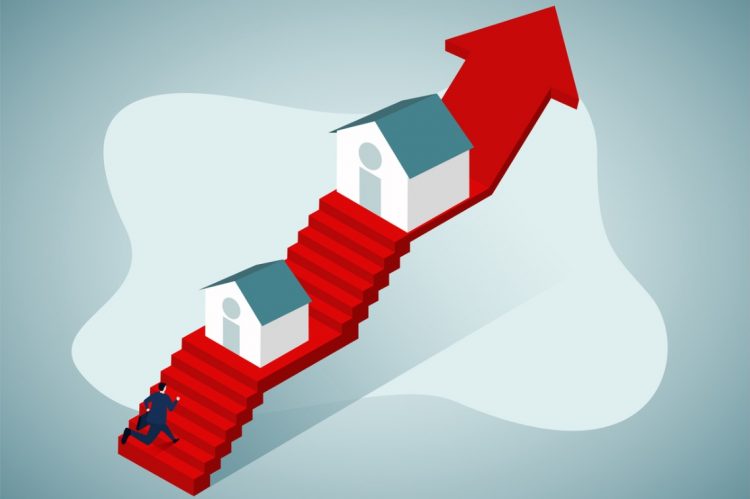New-home sales, which have been up and down this year after experiencing historic surges post-pandemic, saw another major jump in July, according to the U.S. Census Bureau, rising a blistering 10.6% from the previous month and 5.6% from a year ago as buyers flocked to new builds against the backdrop of economic and interest rate uncertainty.
But economists don’t necessarily expect the trend to continue, as an influx of existing homes and an overall increase in supply tips the balance of home sales back toward historic norms, where existing homes are cheaper and make up the vast majority of sales.
“(T)he new-home market has probably lost some of its advantage as home shoppers can find lower-priced existing homes where sellers are increasingly willing to negotiate,” said Dr. Lisa Sturtevant, Bright MLS chief economist.
Last year, new-home purchases rose to unprecedented levels, with builders cutting prices and offering incentives amidst the ongoing affordability crisis.
But the demand for new homes has looked a lot shakier in 2024, and experts say the fundamentals don’t necessarily support a long-term shift toward new builds.
“While mortgage rates moved lower in July, the Census estimated gains for new-home sales do not match recent industry survey data including the NAHB/Wells Fargo Housing Market Index which showed weakness in the current sales index,” said NAHB Chief Economist Robert Dietz in a statement. “The Census estimate of new-home sales is often volatile and subject to revisions, and it is possible that the July estimate for sales will be revised lower next month.”
New-home sales were up in every region, with the West leading on a month-to-month basis—experiencing a huge surge of 33.8% from June to July. The Northeast rose 6.9%, with the South up 2.9% and the Midwest rising 9.9%.
As far as price point, the cost of new homes rose slightly in July, with the median new build selling for $429,800, up from $416,700 last month but down slightly from a year ago.
Despite this positive data, all eyes are now on the longer-term progression of markets, as 2024 is still on track for a low level of home sales overall. With the Federal Reserve projecting several rate cuts across 2025, the big question is whether significantly lower rates will be enough to bring sales back to their pre-pandemic levels.
“NAHB is forecasting gradual improvements for the home building sector as the Fed eases monetary policy and mortgage interest rates trend lower,” Dietz said.
Sturtevant pointed out that existing-home inventory has finally reached 2020 levels, and new-home inventory is also elevated. A more balanced market is good news for buyers, but low levels of consumer confidence and continued worries about the broader economy have continued to cast doubt on how healthy the market will be during the Fed’s expected winddown of rates.
Molly Boesel, principal economist at CoreLogic, agreed with Dietz that a steady ramp-up of home selling activity is more likely than a sudden breaking of the dam from falling rates.
“Home buying remains near historic lows going into the expectation of a Federal Reserve rate cut in mid-September,” Boesel said in a statement. “While the numbers indicate that demand is flat, the figures don’t tell the whole story. There is a lot of pent-up demand from potential homebuyers waiting for that cut to make an offer. Once that happens, sales will begin to move upwards slowly.”
Where will new builds fit into this equation? That remains unclear, although the upcoming election could have a significant impact. Vice President Kamala Harris recently promised to build 3 million new homes across the country, and has made local land use regulation a major campaign issue, with the goal of allowing more new builds in historically restricted areas.
First-time homebuyers also made up a larger proportion of new-home buyers in 2023, and Harris has also promised to provide $25,000 in down payment assistance for those buyers—though details of that program have not been released.
In the end, though, experts were largely cautious in their assessment of the new-home market, pointing to more fundamental shifts and behaviors that could turn the new-home market in the near-term.
“Homebuilders have been able to offer concessions, including mortgage rate buydowns, to help homebuyers overcome affordability obstacles. However, the landscape might be changing for the new-home segment of the market,” Sturtevant said.












